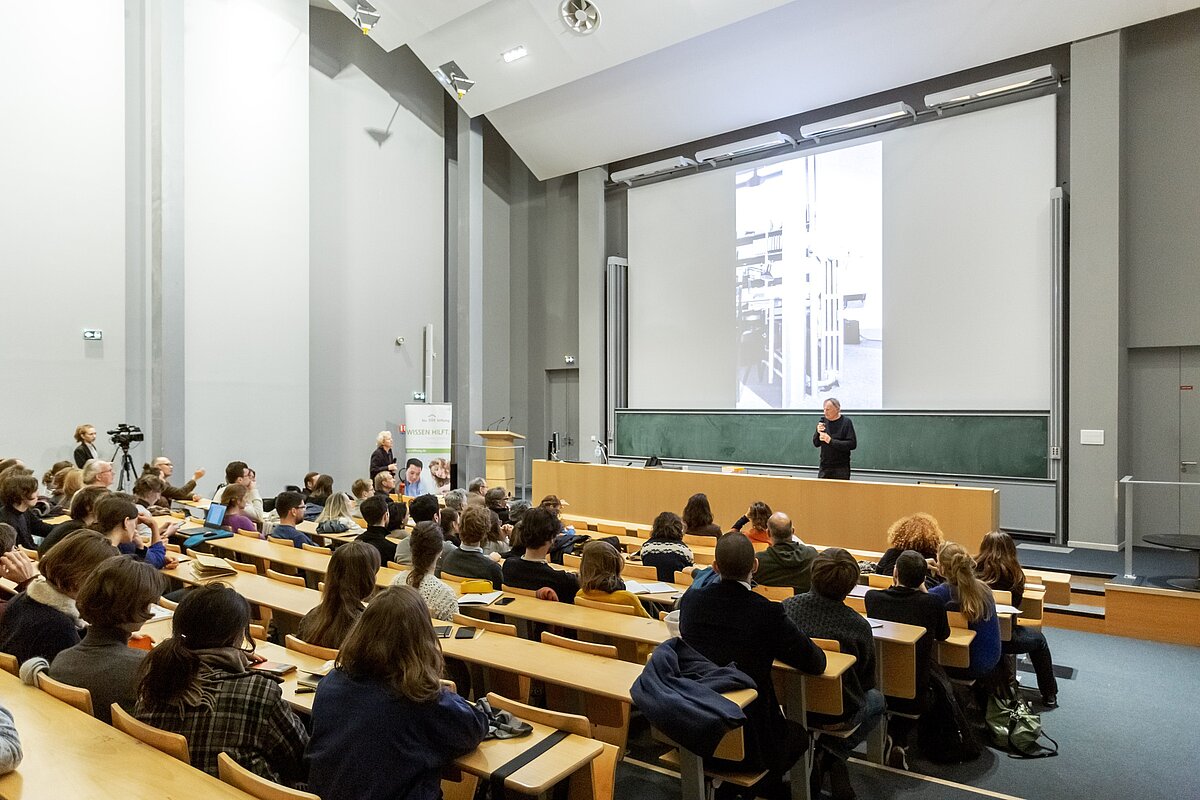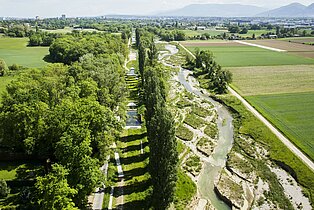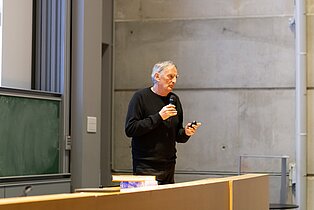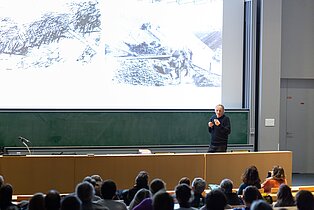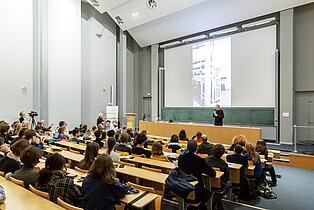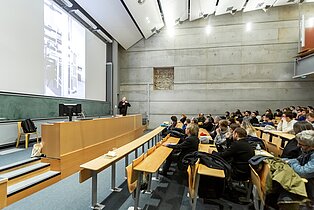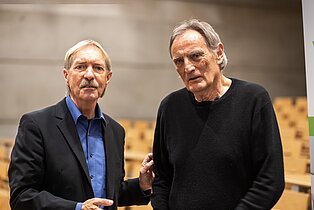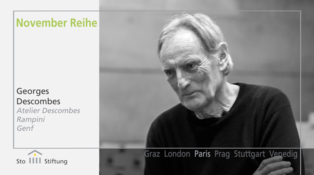Review | Georges Descombes in Paris
Georges Descombes, The Transformation of the Plaine de l'Aire
Born in the suburbs of Geneva, it is a few dozen meters from where he grew up that Georges Descombes designed the Lancy park in the early 80's, a work that brought him recognition. In this project, he explores new tools for thinking about the landscape and tries to reveal the nature of the place by inserting a few architectural devices. The most remarkable is a tunnel-bridge revealing the topography of the site and allowing the crossing of an automobile road. It was in this same valley, a few kilometers upstream, that for 15 years he undertook the transformation of the Plaine de l'Aire, a project whose history — a veritable roman-fleuve — is the subject of the conference. He likes to say it, he never really left his valley.
In fact, his career is filled with other achievements, conceived collectively, whether with Michel Corajoud for the Jardin d'Éole in Paris, André Corboz, Alain Léveillé, or more recently with the Atelier Descombes Rampini, opened by his son Julien Descombes and Marco Rampini. The spectrum of projects is wide and does not stop at the landscape. Together with Herman Hertzberger, Descombes created a memorial for the victims of an air crash in the housing complex of Bijlmer, close to Amsterdam. He designed the "Swiss Path", a walking route on the shores of the "Lake of the Four Forested Settlements", which was inaugurated on the 700th anniversary of the Helvetic Confederation. He transformed a farm into a house for a doctor and a grocery store into a studio for Jean-Luc Godard. All of his creations have one thing in common: they create links, whether in the landscape, in culture or between the past and the present.
The requalification of the Plaine de l'Aire, located on the edge of the canton of Geneva, is the main subject of the lecture. It was carried out with a multidisciplinary team that took the name of Superpositions. At the time of the competition, the landscape appeared as follows: a line of poplars from Italy, agricultural fields, a village, a forest and mountains. At the foot of the line of poplars: a concrete infrastructure. In the 1920s, the river and its meanders were canalized into a fixed channel, a linear structure designed by hydraulic engineers to control the river and its hazards for the benefit of agricultural crops. More than a century later, the river overflows and its straight channel gives it a dangerous flow velocity. The demand is therefore twofold, to slow down the flow and give the river more room - the implicit suggestion: to restore the river to its former appearance, to restore its original condition.
Echoing the theme of the lecture series, it is thus a question of restoring a vanished ecology. From the outset, Georges Descombes warns: "a too great obsession with ecology becomes almost a new functionalism. When ecology is the only element taken into consideration, the landscape is reduced to processes.(1)" According to Descombes, the landscape is cultural, it is not only an ecosystem, but also an accumulation of stories. It is composed of superimposed historical strata containing the memory of the men who transformed it. The modification of a place should not therefore be thought of ex nihilo and be confined to the design of a new ecosystem, but should weave links with the past. To achieve this understanding of the territory, the design process begins with a precise reading of the site's history and its evolution. Ancient and modern documents - maps, writings, paintings, photographs - are linked to observations made on site. Integrating these researches, the proposal submitted during the competition rejects the idea that the landscape will return to an "original state" and proposes instead a collection of attentions to the memory of the place.
The canal built in the 19th century is preserved and the new river bed is dug next to it. This choice allows us to see the successive relationships of the inhabitants to the river: from an element that we want to isolate to one that we want to be next to. The canal, which was 3 meters deep, is backfilled to a depth of 1.5 meters. The new area becomes a slightly recessed public space, an alley whose rectilinear perspective is accentuated by the two rows of poplars.
At the same time, the question of the morphogenesis of the new river arises. The meanders are impossible to predict by algorithmic models, making it difficult to control the design of the river. The solution adopted is experimental. Bulldozers dig a diamond-shaped checkerboard into the ground. This preparatory work before the opening of the sluice gates resembles an attempt to create a controlled hazard - a blank score before the improvisation of the water. In a few months, the river takes shape, carrying away some rhombi, digging the first curves. The Plaine de l'Aire, a vast expanse of bocage and marshland before its watercourse was canalized, finds a sample of its pre-industrial DNA in this fragment of landscape.
The curve of the new river and the straight line of the preserved structure interact in their layout and history. One was built by man to control nature, the other was built by man allowing nature to recreate itself. Along these two lines, public amenities have been built. The programme is not arranged in a single gesture but as a series of specific interventions, a succession of situations.
The first one is next to a bridge over the river. A concrete platform is made accessible by a flight of steps inscribed in the topography. On this platform, we are close to the river, in a space enclosed by the embankments and the bridge. A close link with the banks, vegetation and water is established, reminiscent of the one that could be found in the old wash houses of the region. By using the topography of the infrastructures, this layout proposes a relationship to the water comparable to the one of vernacular building. An evocation of the past in a typically contemporary landscape.
A second situation is produced by the installation of a pergola covering a small section of the canal. The metal structure chosen is reminiscent of those used by the farmers of the plain. Both a market garden greenhouse and a pergola, the semicircular structure evokes the agricultural component of the site, while at the same time being a place of leisure, sheltered from the sun by climbing plants.
A third situation refers to the writings of Rousseau, who stayed nearby. It is built from elements found in the descriptions of his texts: a cherry tree, a river, ruins, a fountain, a bench and a table under a tree. A situation-citation, in homage to the author who experienced a completely different landscape during his stay in the valley.
Other situations punctuate the Promenade de l’Aire. They have in common to reveal the characteristics of the place with minimal interventions, creating links between the walkers, the river and the memory of the site.
In parallel to this work on site, Georges Descombes and his team published a newspaper called The River Chronicle on a regular basis during the course of the project. It is a collection of the various articles published about the site, its history, its future and allows for the mediation of the project. It is also an attempt to weave links between the inhabitants and the river by continuing the construction of the place in the collective imagination. The aim is to create a "deep relationship" with the territory. This diary as well as a website and a monograph attest to the work carried out and perpetuate this memory of the site that has been rediscovered. In a few decades, when the urbanization of Geneva will reach this part of the territory, these works will undoubtedly serve as a basis for the new transformations of the valley and will thus perpetuate this way of thinking about the landscape. After all, if there is one lesson to be learned from this, it is that the transformation of the Plaine de l'Aire began long before Descombes' intervention and will continue long afterwards.
Côme Rolin
(1) Quote from the conference of 21 November 2019 at ENSA Paris-Belleville
Interview-Video
Georges Descombes spoke about the importance of universities and schools.


